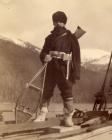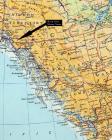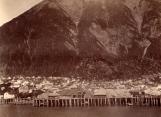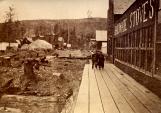1
When gold is discovered today in some remote part of the world, a fleet of planes, helicopters, heavy equipment and staff can be mobilized in weeks. Almost immediately the extraction of the minerals begins to create wealth and jobs regardless of where the gold is found.It was not much like this in 1898. Getting to the gold fields and transporting all the goods needed to mine, required money, resourcefulness and a lot of walking.
This story outlines how the miners made it to the North and all the different methods of transportation that they used as they searched for a fortune in the land of gold.
2
When the Mysterious 36 set out for the North, transportation was largely limited to walking. Occasionally dogs or horses could be purchased if you had enough money. Planes and cars had not been invented and train travel was limited to long cross country trips in the south. The White Pass Route was not yet completed. Local merchants and movers had some horses and pack animals.If you were going to the gold fields it was largely under your own steam.
3
Seattle street scene showing Hotel Stevens4 March 1898
Seattle
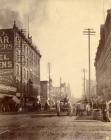 Credits:
Credits:(MacBride Museum Collection 1989.30.11)
4
The 36 met in Seattle. In 1898 horses and carts or carriages were the one of the main methods of local transportation. Cities were small and most people still walked everywhere that they needed to go.If you were going a long trip, in some places it was possible to travel by rail, which is likely how most of the 36 reached Seattle.
6
Most international travel was truely overseas as long voyages by boat were necessary. When the 36 left Seattle they traveled by steamer up the Pacific coast.8
This map shows the route that the boats traveled up the coast and the destination of the 36.10
The city of Juneau is dominated by the wharf at the harbour. The arrival of boats was always a time of excitement and anticipation. The harbour front is the marketplace of the community: the centre of exchange for all people and goods.12
The City of Skagway is so new in 1898 that some of the streets are still filled with stumps. The only way to travel through parts of the mud-filled city is to walk along boardwalks.14
Dyea is the last port before the climb of the Chilkoot Pass. A long wharf is built at the end of a tidal estuary.Most stampeders heading for the Klondike ended their sea travels here.
